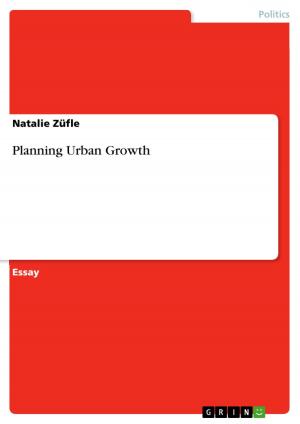Concepts of love in William Shakespeare's Romeo and Juliet
Fiction & Literature, Literary Theory & Criticism, British| Author: | Thomas Eger | ISBN: | 9783638510295 |
| Publisher: | GRIN Verlag | Publication: | June 15, 2006 |
| Imprint: | GRIN Verlag | Language: | English |
| Author: | Thomas Eger |
| ISBN: | 9783638510295 |
| Publisher: | GRIN Verlag |
| Publication: | June 15, 2006 |
| Imprint: | GRIN Verlag |
| Language: | English |
Seminar paper from the year 2001 in the subject English Language and Literature Studies - Literature, grade: 1,3, Bielefeld University, 12 entries in the bibliography, language: English, abstract: Why was Shakespeare so successful in his times? How come, his plays drew the masses into the theatres? How did he manage to attract all these different groups of people with different backgrounds at the same time? These are the questions I will have in the back of my mind while writing this paper. I will examine one aspect of his style more closely, which I found in hisRomeo and Juliet.In doing so, I hope to give at least some small explanation of the reason of his overwhelming success. It was probably in 1595 when Shakespeare wrote this famous tragedy. He was doing so, living in a society which was leaving the Middle Ages far behind and rapidly growing in complexity. The English society was splitting up into a huge variety of different groups and organisations. The Reformation produced a wealth of new religious groupings. Especially the Puritans were to become very influential in England. The rise of the middle class was taking place under the reign of queen Elizabeth, which was combining artisans, merchants and the more prosperous peasants and was accumulating new resources and capital. The aristocracy was changing: It was opening up for new members, mostly wholesalers who had earned a fortune with the profitable overseas trade. The decline of the ancient system of feudalism was highly advanced, which for the common peasant meant that he wasn't tied to his small piece of soil any longer. He was much more mobile now. Family structures were changing as well. The kin (that is the enlarged family) as the main organising factor was beginning to lose ground to the smaller nuclear family.
Seminar paper from the year 2001 in the subject English Language and Literature Studies - Literature, grade: 1,3, Bielefeld University, 12 entries in the bibliography, language: English, abstract: Why was Shakespeare so successful in his times? How come, his plays drew the masses into the theatres? How did he manage to attract all these different groups of people with different backgrounds at the same time? These are the questions I will have in the back of my mind while writing this paper. I will examine one aspect of his style more closely, which I found in hisRomeo and Juliet.In doing so, I hope to give at least some small explanation of the reason of his overwhelming success. It was probably in 1595 when Shakespeare wrote this famous tragedy. He was doing so, living in a society which was leaving the Middle Ages far behind and rapidly growing in complexity. The English society was splitting up into a huge variety of different groups and organisations. The Reformation produced a wealth of new religious groupings. Especially the Puritans were to become very influential in England. The rise of the middle class was taking place under the reign of queen Elizabeth, which was combining artisans, merchants and the more prosperous peasants and was accumulating new resources and capital. The aristocracy was changing: It was opening up for new members, mostly wholesalers who had earned a fortune with the profitable overseas trade. The decline of the ancient system of feudalism was highly advanced, which for the common peasant meant that he wasn't tied to his small piece of soil any longer. He was much more mobile now. Family structures were changing as well. The kin (that is the enlarged family) as the main organising factor was beginning to lose ground to the smaller nuclear family.















